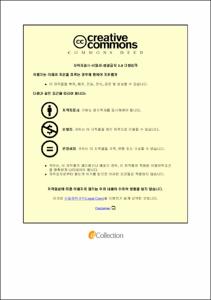양극 활물질 전구체(NCA)로부터 탄산리튬, 니켈 및 코발트 회수 연구
- Alternative Title
- A Study on the Recovery of Li2CO3, Ni and Co from Cathode Active Material NCA(LiNiCoAlO2) of Spent Lithium Ion Battery
- Abstract
- In recent years, lithium-ion batteries have been used as a main energy source for hybrid mobile phones as well as portable mobile power sources such as smart phones and netbooks due to their high output and high energy characteristics. LCO (LiCoO2), which is a layered structure with a stable capacity, has been widely used as a cathode material for lithium ion battery cells, but its price is unstable due to low capacity characteristics, environmental pollution and cobalt resource constraints.
Therefore, NCA (LiNiCoAlO2) anode materials came up as an alternative for solving problems such as high cost and low capacity characteristics of LCO (LiCoO2). NCA (LiNiCoAlO2) has recently been in full swing for the electric vehicle battery market, and the demand for used output batteries has increased. Naturally, the demand for NCA, which is a middle- and high-output active material, has also increased.
Studies on recycling of existing cathode active materials include leaching into hydrochloric acid (HCl) and nitric acid (HNO3), and recycling of these waste lithium secondary batteries selectively concentrates only electrode active materials for crushing, magnetic separation, classification, etc. After concentration, there is a method using sulfuric acid leaching method using hydrogen peroxide as a reducing agent, and treatment with mountain solution to recover lithium salt and cobalt salt. In the case of using organic acids, the study on the separation of valuable metals by citric acid (C6H8H8E8) and oxygen acid (C2H2SO4) was conducted. The use of such a wet process has the risk of causing costly processing and environmental problems of the byproducts generated during the process, so it is necessary to develop an environmentally friendly process.
As a result, in this study, Carbonation through CO2 thermal reaction, water leaching, and CO gas thermal reaction were performed instead of the conventional wet processing. A method of separating and recovering Li2CO3, Co, and Ni from NCA (LiNiCoAlO2), a cathode active material of spent lithium ion batteries, was studied through an environmentally friendly and simple process. It is expected that it will contribute to localization of raw materials when applied to industry by environmentally friendly and simple metal recovery method.
- Issued Date
- 2019
- Awarded Date
- 2019. 8
- Type
- Dissertation
- Publisher
- 부경대학교
- Affiliation
- 부경대학교 대학원
- Department
- 대학원 금속공학과
- Advisor
- 왕제필
- Table Of Contents
- I. 서론 1
1.1 연구배경 1
II. 이론적 배경 3
2.1 Li-Ion Battery 개요 3
2.1.1 Battery 정의 3
2.1.2 Li-Ion Battery 구성요소 5
2.1.3 Li-Ion Battery 작동원리 7
2.2 양극활물질 종류 및 특징 9
2.2.1 층상구조 산화물 11
2.2.2 Spinel구조 화합물 12
2.2.3 Olivine구조 화합물 14
2.3 폐리튬이차전지의 재활용 기술 14
2.3.1 용해 16
2.3.2 산 침출 17
2.3.3 용매추출 18
2.3.4 약품침전 18
2.4 국내·외 재활용 현황 19
2.4.1 해외 재활용 동향 20
2.4.2 국외 재활용 동향 21
2.4.3 해외 기술개발 동향 22
2.4.4 국내 기술개발 동향 25
2.5 Li, Ni, Co의 재활용 기술의 필요성 27
III. 실험방법 및 결과 30
3.1 실험 재료 및 장비 30
3.2 실험 과정 및 결과 36
3.2.1 NCA(LiNiCoAlO2)와 CO2 gas 반응을 통한 상분리 38
3.2.1.1 온도 조건에 따른 상분리 40
3.2.2 수침출 및 여과 42
3.2.3 NiO, CoO 혼합분말 수소 환원 47
3.2.4 혼합분말로부터 Ni의 선택적 회수 52
IV. 결론 57
V. 참고문헌 59
- Degree
- Master
- Files in This Item:
-
-
Download
 양극 활물질 전구체(NCA)로부터 탄산리튬, 니켈 및 코발트 회수 연구.pdf
기타 데이터 / 1.3 MB / Adobe PDF
양극 활물질 전구체(NCA)로부터 탄산리튬, 니켈 및 코발트 회수 연구.pdf
기타 데이터 / 1.3 MB / Adobe PDF
-
Items in Repository are protected by copyright, with all rights reserved, unless otherwise indicated.